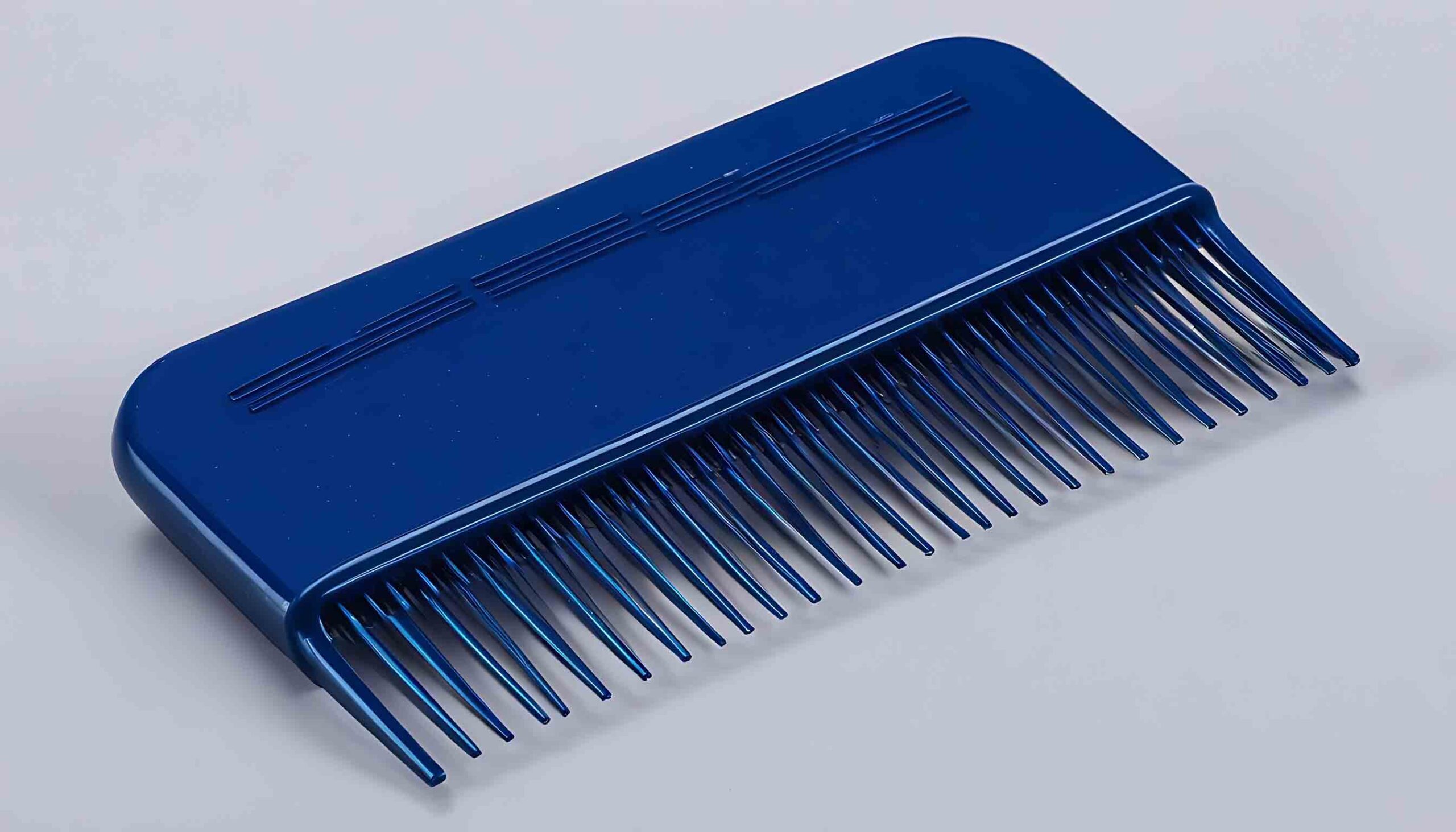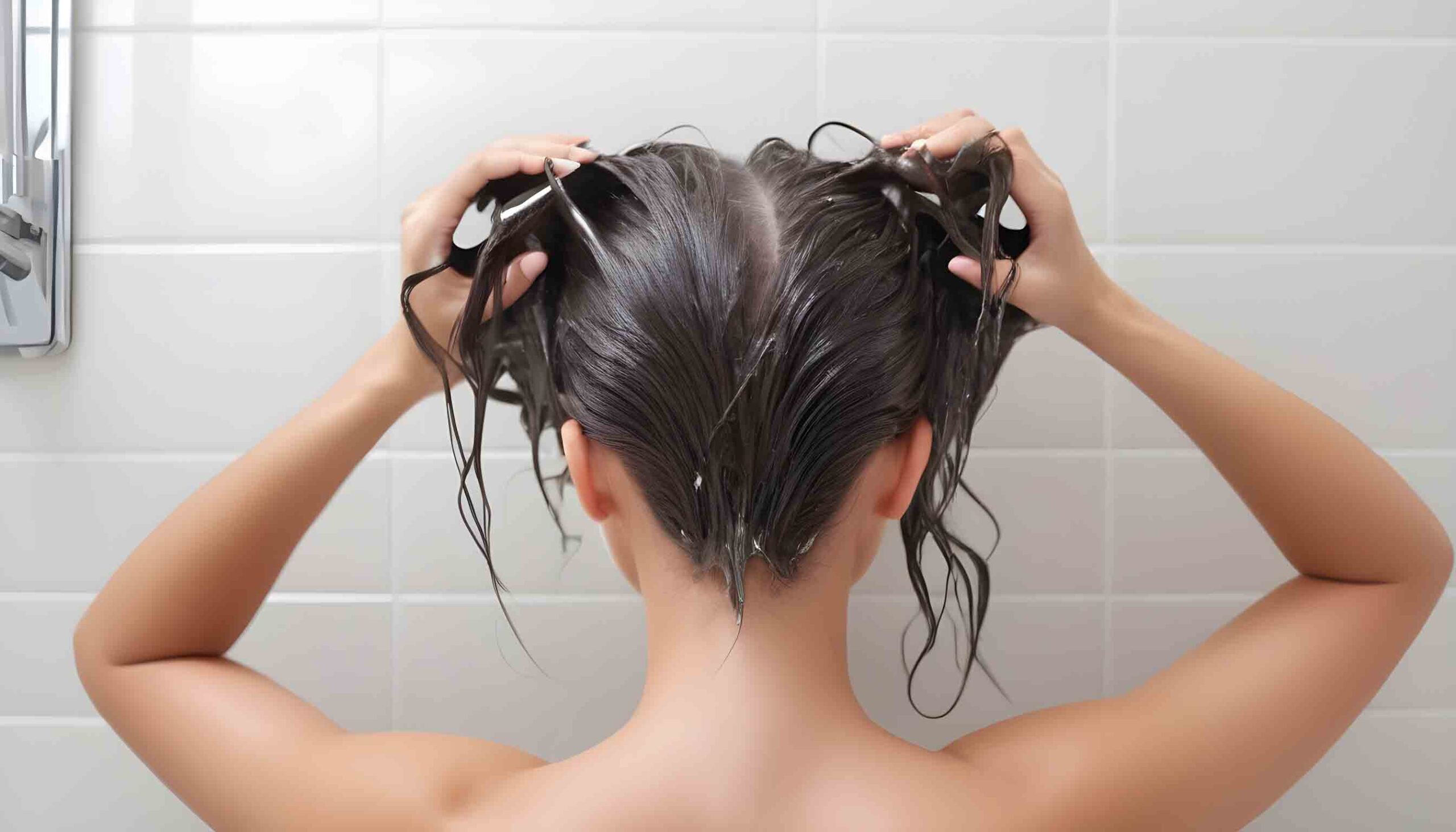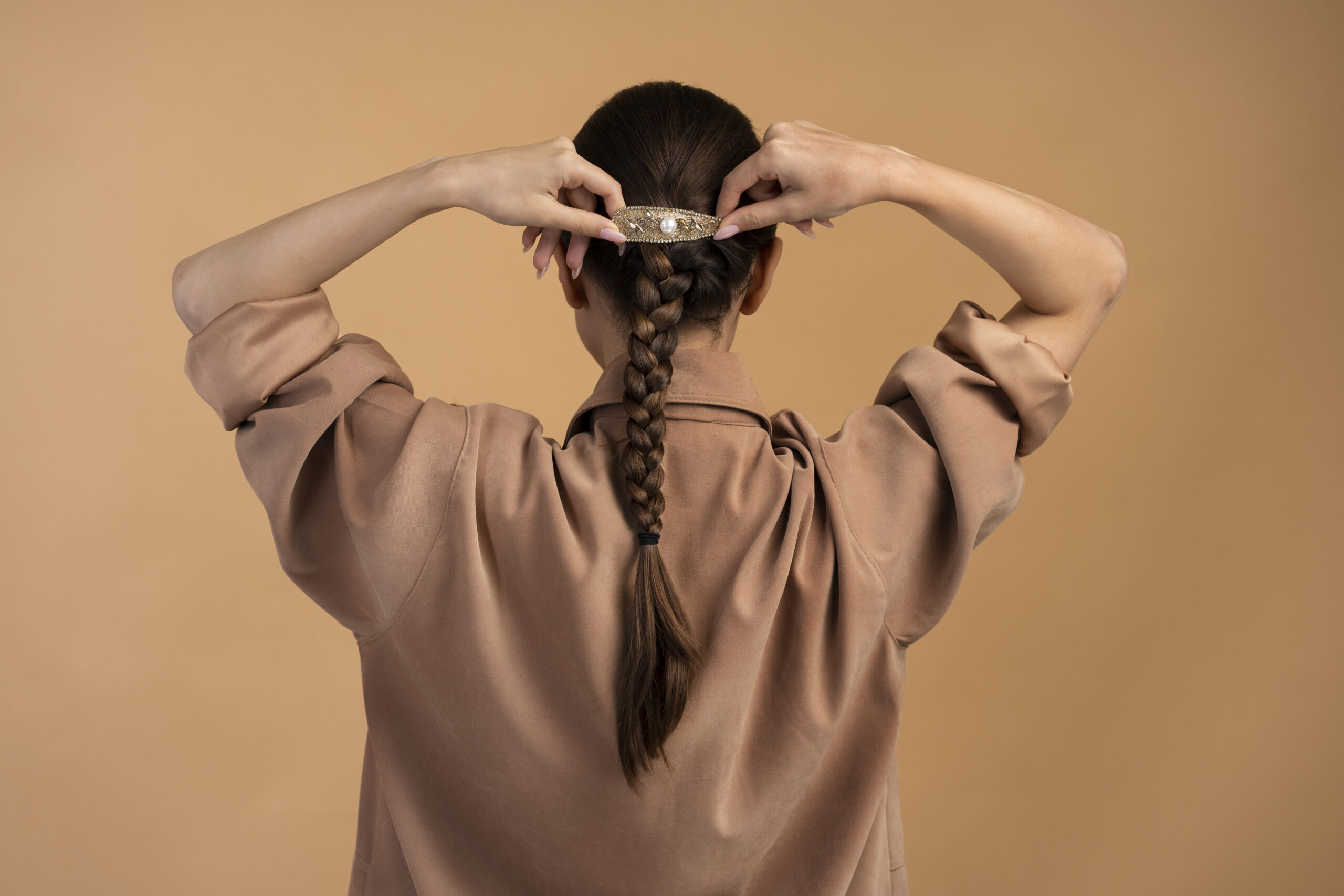Overview of Nit Removal Comb
A nit removal comb is a vital tool for successfully treating and eliminating head lice infestations. This comprehensive guide covers everything you need to know about finding the best lice combs, proper combing techniques, and integrating combing into your lice treatment routine.
What are Nit Removal Comb?
Nit combs, also called lice combs, are special fine-tooth combs designed specifically for removing head lice eggs (nits) and lice from the hair shaft and scalp.
Key Features of Nit Combs
- Very fine, narrow metal teeth spaced 0.2-0.3mm apart to catch lice and nits
- Long, sturdy teeth to comb through the entire hair length
- Rounded tips on teeth to avoid scratching scalp
- Comfortable handle for gripping during combing
Benefits of Using a Nit Comb
- Physically remove nits and lice – essential for complete removal
- More effective at finding nits than regular combs or brushes
- Allows you to monitor the treatment process and identify reinfestation
- Safe, non-toxic, and inexpensive tool as part of natural lice treatment
Best Nit Removal Comb Recommended By Experts
#1 LiceMeister Professional Nit Free Terminator Lice Comb
- Made of the highest quality, electropolished stainless steel
- 18 fine teeth spaced 0.2mm apart
- Rounded ends to prevent scratching
- 8-inch long teeth to reach all hair
- Comes with bonus nit removal pick
Pros
- Highest nit and lice removal effectiveness
- Durable and corrosion-resistant
- Smooth polished teeth prevent snagging
- Long reach makes combing quicker
Cons
- Handle could be more ergonomic
- Not ideal for very thick, coarse hair
#2 Nisska Deluxe Stainless Steel Professional Lice Comb
- Sleek, high-grade stainless steel comb
- Optimal 0.23mm spaced teeth
- Curved handle offers comfortable grip
- Includes nit removal pick and hair clips
Pros
- Sturdy and cleanly crafted
- Smooth gliding teeth
- Ergonomic handle prevents hand fatigue
- Value pack with accessories
Cons
- Slightly wider teeth may miss some nits
- Not ideal for very long or thick hair
#3 Terminator Lice Killing Comb
- 100% stainless steel comb
- Dense 0.2mm tooth spacing
- 6.5 inch long curved teeth
- Includes magnifying glass
Pros
- Affordable cost
- Dense teeth ensure no nits are missed
- The magnifier helps guide the combing
- Compact size for travel
Cons
- Shorter teeth not optimal for long hair
- Handle lacks ergonomic shaping
- May tug more than pricier combs
TABLE: Comparison of Top-Rated Nit Combs
| Product | Tooth Spacing | Tooth Length | Handle | Price |
|---|---|---|---|---|
| LiceMeister | 0.2mm | 8 inches | Basic | $$$ |
| Nisska Deluxe | 0.23mm | 7.5 inches | Ergonomic | $$ |
| Terminator Lice Comb | 0.2mm | 6.5 inches | Basic | $ |
How to Use a Lice Comb for Effective Nit Removal
Using the nit comb properly is key for successfully removing all traces of lice. Follow these combing techniques:
Before Combing
- Wash hair with lice removal shampoo to dislodge nits and make combing easier.
- Detangle hair thoroughly using a regular comb/brush and hair conditioner.
- Sit in a brightly lit spot to better see the nits and lice.
Combing Technique
- Start underneath the top layer and comb one section at a time.
- Hold the comb flush against the scalp and comb slowly through to the ends.
- After each stroke, wipe the comb on a white towel or paper towel to see what comes out.
- Work methodically around the whole head, combing in different directions.
- Pay extra attention to the behind the ears, nape of the neck, and top of the head.
- Use a nit removal pick on very stubborn nits if needed.
After Combing
- Soak the comb in hot soapy water for 10 minutes to kill any caught lice.
- Carefully scan the comb for any leftover nits and manually remove them.
- Sterilize the comb before the next use by cleaning it with alcohol or boiling it for 5-10 minutes.
TABLE: Tips for Effective Nit Combing Sessions
| Do’s | Don’ts |
|---|---|
| Start with freshly washed damp hair | Comb dry, dirty hair |
| Comb in good lighting | Comb in dim lighting |
| Section hair cleanly for thorough combing | Randomly comb sections |
| Sterilize the comb after each use | Keep comb flush on the scalp |
| Clean comb after each stroke | Comb with dirty comb between strokes |
| Check full hair length | Only comb ends superficially |
| Be slow and methodical | Rush through combing |
| Sterilize comb after each use | Share combs between people |
Integrating Lice Combs into Treatment Routines
Combing should be an essential part of both initial lice treatment and ongoing prevention routines.
With Initial Lice Treatment
- Comb out nits daily during the 7-10 days of initial treatment.
- Confirm all live lice are removed after finishing shampooing or combing sessions.
- Keep combing 2-3 days after the last lice/nits are spotted to ensure elimination.
- Catch any newly hatched nits before they can mature and reproduce.
For Prevention and Monitoring
- Comb 2-3 times per week after treatment to detect any new lice/nits quickly.
- Comb whenever itching occurs to identify reinfestation right away.
- Continue to comb 1-2 times per week for 2-3 weeks even after the itching resolves.
- Comb periodically as part of a regular hygiene and scalp care regimen.
Types of Nit Combs and Key Differences
There are a few different types of nit combs available. Here are the main options and how they compare:
Metal Nit Combs
- Made of stainless steel or other metals
- Very durable and long-lasting
- Allows for fine, narrow tooth spacing needed to catch lice and nits
- Can be sterilized by boiling
Pros
- Sturdy teeth don’t bend or warp with repeated use
- Smooth polished teeth help the comb glide easily through hair
- Doesn’t absorb dirt or debris like plastic
- Withstands frequent high-heat sterilization
Cons
- Can be more expensive than plastic combs
- Metal may feel cold on the scalp
- Not useful if a person has a mental allergy
Plastic Nit Combs
- Made of plastic polymers like acrylonitrile butadiene styrene (ABS)
- Usually mass-produced for low-cost
Pros
- Very inexpensive to produce
- Warmer feel than metal on the scalp
- Color coding is possible for different family members
Cons
- Less durable – teeth can bend and break
- Plastic can warp if boiled to sterilize
- May retain dirt, hair products, and nitdebris
- Not as smooth gliding as metal
H4: Carbon Nit Combs
A newer type of nitcomb uses conductive carbon material:
Pros
- Narrower tooth spacing than plastic or metal
- Excellent conductivity detects eggs and lice instantly
- Durable carbon material resists damage
Cons
- More expensive than basic plastic combs
- Conductivity may not be useful enough to warrant the price
- Not widely available yet
Manual vs. Electric Nit Combs
Comb options include manual combs used by hand or electric combs:
Manual Nit Combs
- Requires combing hair meticulously section-by-section
- Dependent on the user’s combing thoroughness
- Easy to use anywhere without batteries/power
Electric Nit Combs
- Battery-powered combs do combing work for you
- May not be as thorough at nit removal
- More expensive than basic manual combs
- Not practical for young children
Most lice experts recommend using a quality stainless steel manual nit comb for the best results in combating lice.
Conclusion
Using a quality nit removal comb is a safe, non-toxic way to physically clear lice and nits. Pairing combing with natural lice shampoos enhances results. Monitor with combing regularly after treatment to prevent recurrence. The LiceMeister Professional Nit Free Terminator Comb is the top nit comb recommendation based on its specialized stainless steel design, fine but gentle teeth, and proven lice removal results. Investing in a good nit comb helps make treating head lice faster and more effective.
Frequently Asked Questions About Nit removal comb
What is the best way to use a lice comb?
To properly use a nit removal comb:
- Start with washed, conditioned, and detangled damp hair in good lighting.
- Slowly comb through the hair in sections, holding the comb flush to the scalp.
- Wipe the comb on a towel after each stroke to check for lice and nits.
- Clean the comb thoroughly and sterilize between uses.
- Work methodically around the whole head, paying extra attention behind ears and neck.
- Comb daily during treatment and continue combing regularly after to prevent re-infestation.
How often should you use a lice comb?
During active lice infestation, experts recommend combing the hair meticulously with a quality nit comb on a daily basis. Comb thoroughly each time the hair is shampooed with a pediculicide. Continue daily combing for 2-3 weeks after the last live louse is spotted to ensure all nits have hatched and been removed.
After successful treatment, switch to combing hair 2-3 times per week for 1-2 months to detect any new nits or lice before they can spread. Comb whenever itching occurs. Then, continue periodic combing as part of routine hair care and hygiene.
How do you clean a lice comb between uses?
It is important to thoroughly clean nit removal comb after each use:
- Carefully inspect and manually remove any remaining nits stuck on the comb teeth.
- Soak the comb in hot, soapy water for 10 minutes to dislodge debris and kill any lice.
- Rinse and scrub the comb with an old toothbrush if needed to fully clean the teeth.
- Boil the comb for 5-10 minutes to sterilize and disinfect between uses.
- Alternatively, rinse or wipe the comb with rubbing alcohol.
- Allow the comb to fully air dry before using it again.
- Never share combs between two individuals without dis




